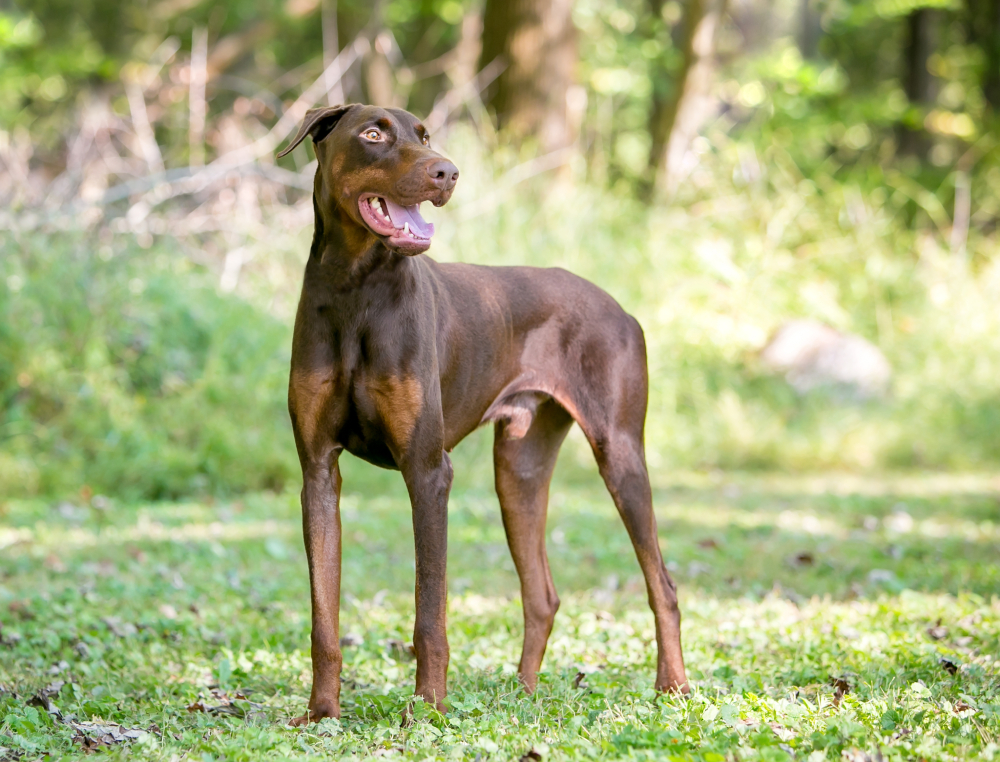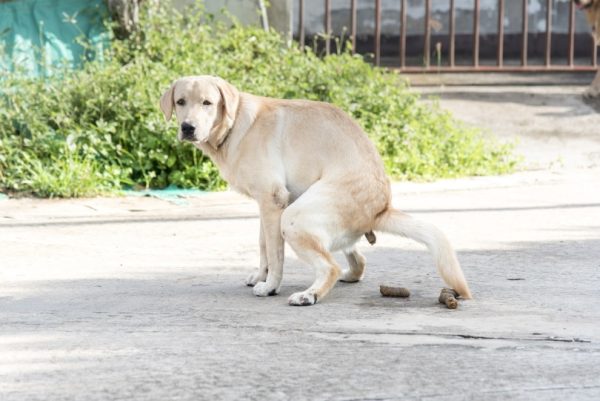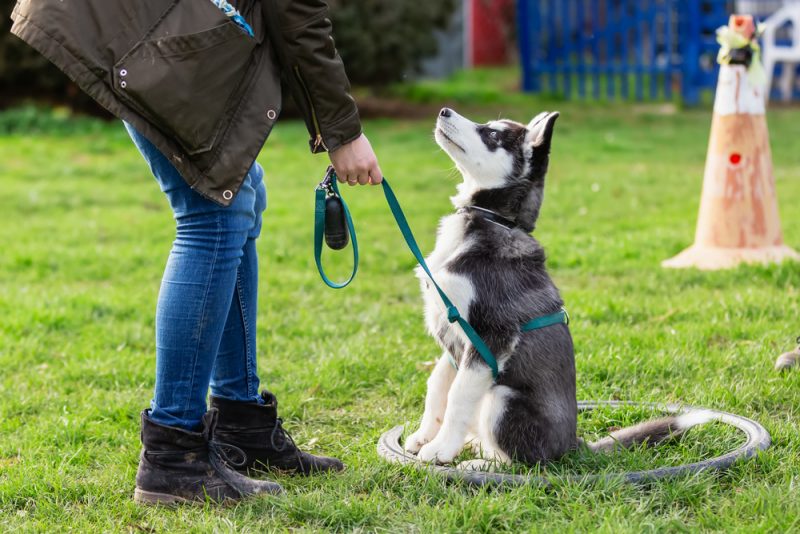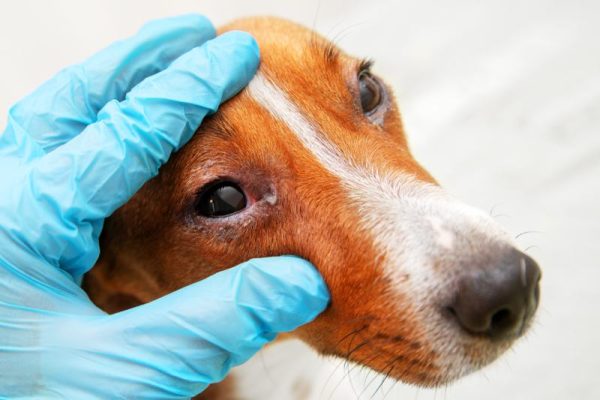In this article
Dobermans have a reputation for being aggressive and potentially dangerous, and when you come face to face with one, it may be easy to understand why. They were initially bred to protect and guard, and were also intended to look as intimidating as possible. They are still considered to be one of the most effective breeds when it comes to the task of serving as a guard dog.
Dobermans are vigilant and loyal to their families, and as such, they may act protective, which some may incorrectly perceive as aggression. However, they aren’t considered an aggressive breed and rank very favorably in terms of the way they socialize and play with other people. As such, acts of aggression (if any) should be properly handled with attention to the dog’s training and what led up to the incident.
In this article, we’ll discuss their natural temperament, what can make a dog aggressive, and compare the noble breed to other dogs and their instincts to protect.

Are Dobermans Naturally Aggressive?
Dobermans were initially bred to be protectors and make excellent guard dogs. They are loyal, brave, and responsive, with an instinct to protect their owners and territory from harm. While Dobermans are considered to be an aggressive breed, this is somewhat of a myth.
Intrinsically, an aggressive dog would attack without any reason or purpose and wouldn’t be receptive towards anyone who approaches them. They’d also likely not respond to any attempts made at calming them down.
The breed definitely has the ability to be a very effective guard dog, however, that doesn’t necessarily mean that Dobermans are aggressive. They’re also very loyal and protective of their family. However, they also have very high energy levels, and their need for both physical and mental stimulation is very high.
Any dog that doesn’t receive enough training, exercise, and mental stimulation may definitely turn into an aggressive individual and often lash out simply due to their poor management and training. However, a Doberman is large and strong enough to cause significant damage when such incidents do occur.
That being said, it’s very dangerous to assume that you’ll be able to train your Doberman puppy perfectly and not have a problematic dog on your hands. The breed isn’t recommended for beginners, as research shows that even the puppies have aggressive tendencies1. As such, they need very consistent and effective training (ideally from a professional).
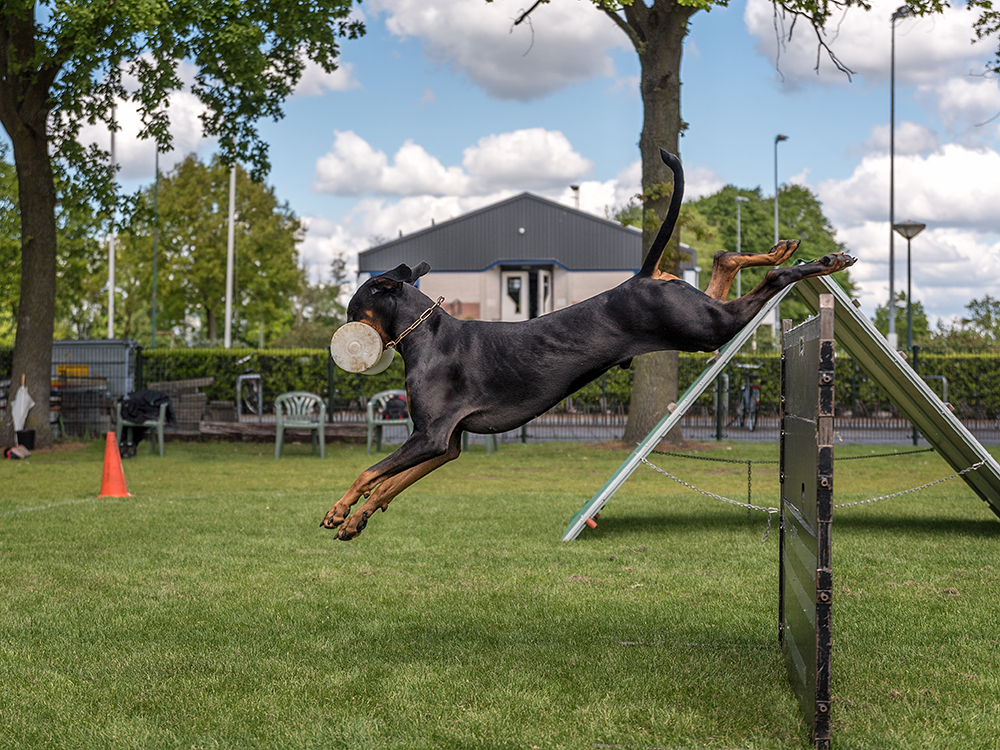
Aggression in Dogs
Aggression in a dog is characterized by hostile and harmful behavior toward another person or animal. It is not necessarily just the act of biting but can also be growling and barking. It can be caused by the need to safeguard a loved one or property, high prey drive, frustration, and pain, but it can also be caused by fear. Fear can cause a dog to quickly shift from reactive and protective to aggressive and is the most common cause of aggression.
A dog that feels scared and threatened may choose to run, but if they can’t, they may fight to protect themself. Our behavior towards dogs may be perceived as a threat without us even realizing it.
A lack of socialization may also cause fear in dogs as they are unfamiliar with different types of sounds, people, and places, and socializing them from a young age can help them grow up more confident and secure in new settings.
A dog’s aggression tendencies can be tested through temperament testing, where they are given various stimuli to see how they react in different situations. Although the tests aren’t entirely accurate, they can provide us with some idea of how aggressive a breed may be.
What Are the Most Aggressive Dog Breeds?
In 2021, a census of dog attacks by breed from previous years was conducted.1 The top five dog breeds in the United States with the most bite attacks were:
According to statistics, Pit Bulls have the highest number of dog attacks.2 Pit Bulls have the highest attack rate in the United States because they’re often used as guard dogs, even when they’re not properly trained or socialized.
An important factor to keep in mind with regards to statistics is that many times, a bite from a smaller dog may not be reported and as such, statistical reporting for dog bites or dog attacks might not be a very accurate reflection of reality. However, the importance of the statistics is noting that certain breeds or crossbreeds can definitely cause significant damage (possibly even death) when attacks do occur.
We understand the difference in the aggression of certain breeds based on reports on bites, behavior clinic caseloads, and expert opinions. In a recent study, the owners of more than 30 breeds of dogs were surveyed using the Canine Behavioural Assessment and Research Questionnaire.3 Two data sets were compared, and the breeds that ranked similarly for aggression toward strangers, dogs, and owners were:
In general, the most aggressive acts were directed toward other dogs and strangers.

How to Control an Aggressive Doberman and Keep Them Safe
Aggression can also be provoked by protectiveness, irritation, guarding, and sickness. Early socialization and training of your Doberman can curb aggressive behaviors and minimize the chances of causing harm to another dog or human. Here is how you can keep your Doberman safe.
The following tips are general guidelines presented by the author for young Doberman puppies, or adopted juveniles/adults who aren’t problematic. If you have a dog with behavioral problems, it’s very important to seek professional assistance on the matter.
1. Early Socialization
Early socialization is a common training technique and is imperative with Dobermans. Socialization training can include exposing your dog to as many environments, people, and circumstances as possible, making them less inclined to experience fear in unfamiliar surroundings.

2. Obedience training
Obedience training is a must. You can obedience train your puppy at home or enroll it in classes. A well-trained and obedient dog is much easier to manage as they age. If your dog finds themself in an uncomfortable situation, basic commands can help them feel in control, focused, and confident. Training will provide trust and structure in your dog’s life and increase the chances of your dog staying safe.
3. Spay or Castrate (Neuter)
It is said that dogs that have been fixed are less aggressive, but it’s not guaranteed. However, the procedure can reduce aggression which is mediated by sex hormones, and also offer your pet other health benefits.
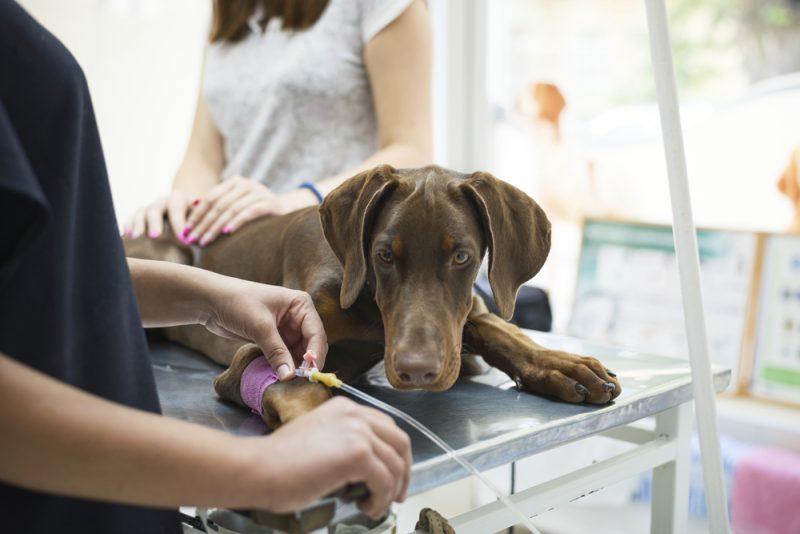
4. Never Make Assumptions
Always be on guard and cautious, and never make assumptions because any dog can bite in the right conditions.

Conclusion
While Dobermans are considered an aggressive breed by some people, there are different ways to interpret circumstances where attacks do happen. Despite their history and reputation, they aren’t often implicated in lists of aggressive dog breeds from a statistical perspective.
Early socialization, obedience training, and a loving home are paramount in curbing aggressive tendencies. According to studies and statistics based on bite reports, temperament tests, and expert knowledge, several breeds are more aggressive than Dobermans. A Doberman will make a great pet but definitely needs to be carefully and properly trained.
Featured Image Credit: Mary Swift, Shutterstock

